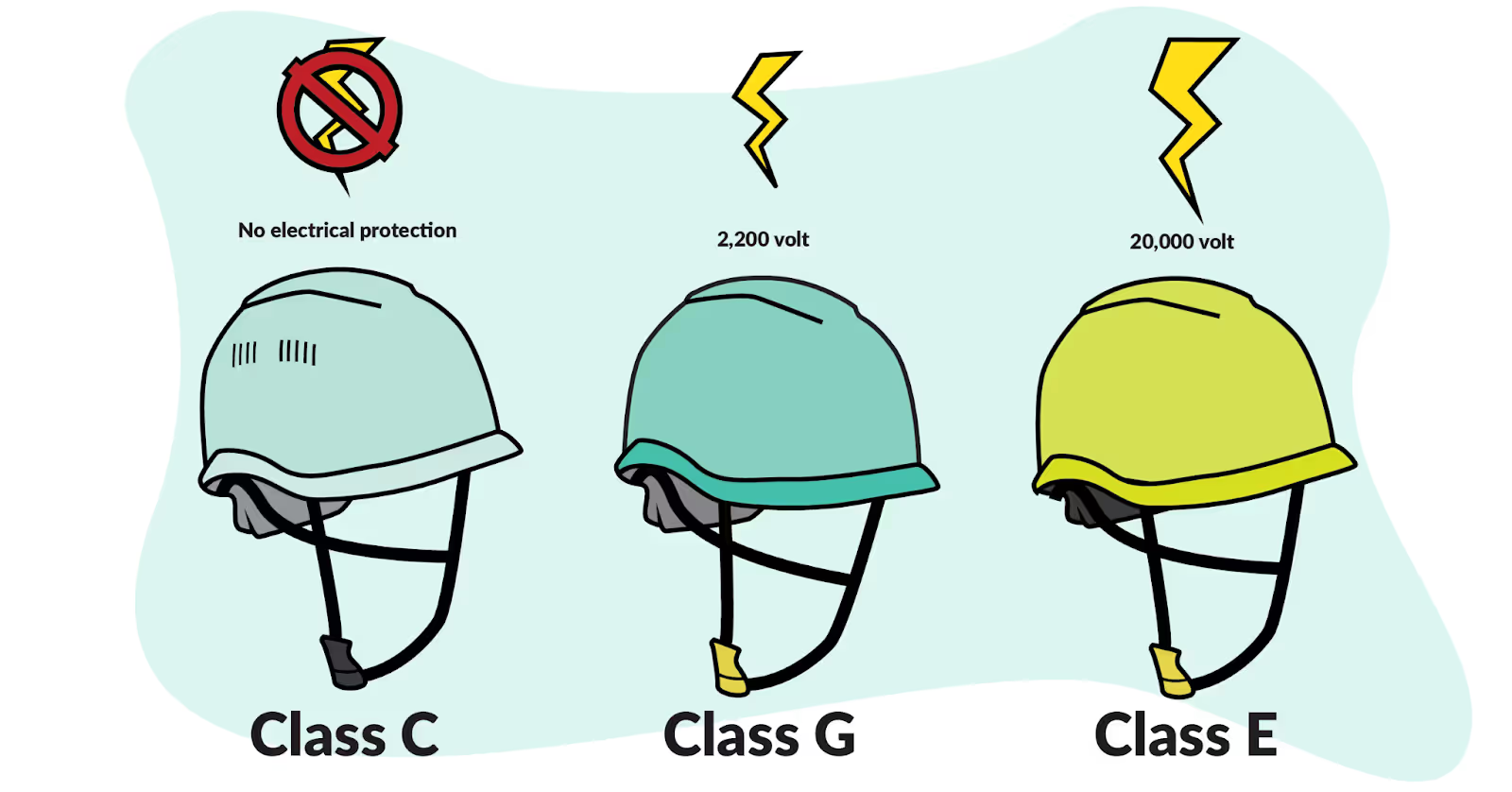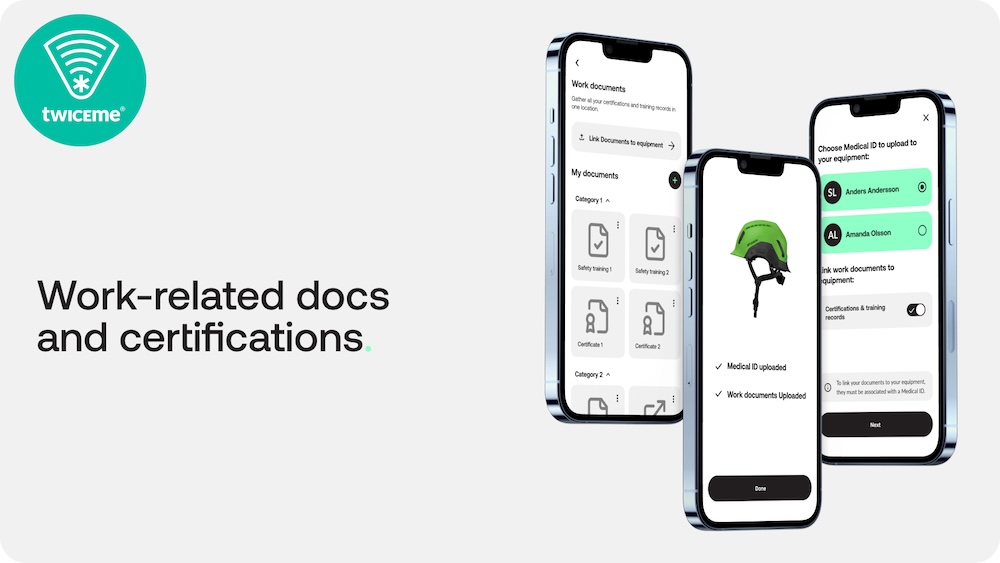The 2023 safety helmet buying guide
We want everyone to have the resources to find the best and most secure helmet, best suited for their needs. To help you we compiled our top tips and important considerations to make for different use cases.

Safety helmets can be a tricky jungle of different terms, classifications, and features to traverse. We here at Twiceme wanted to be your guide through this buying process. We want everyone to have the resources to find the best and most secure helmet, to suit their needs.
The Need for Safety Helmets
First, let’s start by getting some background information. The construction sector has one of the greatest numbers of both fatal and non-fatal traumatic head injuries. Between 2003 and 2010 workers died from traumatic brain injuries at a rate of 2,6 out of every 100 000 workers. Workers in smaller companies with less than 20 employees were more than two times more likely to die from brain injuries and falls were the main cause with more than 50% of all fatal brain injuries stemming from falls. Some good news though is that in the same period from 2003 to 2010, the percentage of traumatic head injuries declined by 6,2% every year.
When Should a Safety Helmet Be Worn?
Head protection is a requirement in a wide range of industries but in general, a safety helmet should be used in any situation where you are prone to head injuries, either from falling, bumping your head, or falling objects. Hopefully, the workers have gotten good training, allowing them to circumvent most accidents altogether. That does not however mean you shouldn't wear a helmet, you never know when something unexpected might happen.
Types of Safety Helmets
Generally, we talk about two types of hard hats. The American National Standards Institute or ANSI recognizes two types. Type I offers protection to the top of the head. Type II offers protection to the top and sides of the head.
There is also a loose distinction made between a hard hat and a safety helmet. The differences between a hard hat and a safety helmet come down to a few factors. Safety helmets often have to pass more rigid safety certifications and standards, handle greater impacts and of a higher load, and be used for a longer time. Safety helmets are oftentimes more expensive than regular hard-hat helmets. As far as safety goes, a safety helmet offers more protection than a hard hat.
You might also require a helmet with additional requirements for your type of work. Some of the more usual special requirements are resistance to flames, electrical hazards, and anti-static helmets. These special requirements might not bring you any additional value in most cases, but where they are needed, they could be life savers.
Classes of Safety Helmets
Depending on the type of work you will be doing it might require your helmet to withstand electrical hazards. OSHA requires the use of a helmet “When there is the possibility that workers’ heads will make contact with electrical hazards”. This means that your safety helmet also has to be ready to withstand the voltages you might come in contact with. The different classes of this protection against electrical hazards are:
- Class G (General) hard hats are rated for 2,200 volts
- Class E (Electrical) hard hats are rated for 20,000 volts
- Class C (Conductive) hard hats do not offer electrical protection

Safety Standards of Construction Helmets
OSHA is the main governing body regarding construction safety standards in the US. When it comes to safety helmet standards, they follow two specific standards: 29 CFR 1910.135: Which governs safety helmet requirements for general industry workers. And 29 CFR 1926.100: This refers to head protection requirements for construction, demolition, and renovation workers. If your helmet follows the ANSI standard you can be sure that it also complies with OSHA’s standards.
For Europe, the main standard to look out for is EN397. A certified EN397 helmet must be tested for sufficient vertical shock absorption, resistance against sharp and pointed objects, flame resistance, and a chin strap attachment. Another standard to look out for is EN50365, meaning the helmet must give the wearer protection against alternating voltage of up to 1000 V or direct voltage of up to 1500 V and follow the EN397 standards as well. The EN14052 standard regards high-performance helmets and requires both vertical, and lateral shock absorption, vertical, and lateral penetration resistance, chin strap yields at a minimum of 150 N and maximum of 250 N, flame resistance, and a rigorous test of the fastening system effectiveness, the helmet must not become detached during the shock and penetration tests.
You might need to adhere to different standards depending on your specific working situation or if your country requires extra standards to be followed. These are just the two most common ones to look out for.
Extra Integrated Features
More and more helmets nowadays integrate extra features to either increase safety or just quality of life improvement. These are most of the time not required but are an investment worth considering when shopping for new helmets. Some examples include:
Twiceme:
Twiceme HTH (Help The Helpers) technology gives you the information you need to help someone who has become incapacitated in an accident. Using the NFC antenna on any smartphone enables bystanders to relay location, medical information, and critical contact information to first responders on their way to the scene of the accident.
And it buys them and the wearer critical time. All without the need to unlock the wearer’s phone or even have network access. So don’t feel helpless – be a helper. Learn to look for the Twiceme symbol on (category) helmets and do the most human thing of all – help.
Integrated Eyewear:
Provides safety goggles that are integrated into the helmet, leaving the need for wearing a separate pair of safety goggles. This feature is usually helpful for people who are wearing prescription glasses and will hopefully lead to increased use of eye protection.
Additional Protection to Rotational and Direct Impacts:
Several integrated features fall under this umbrella. Look out for brands like MIPS or Koroyd. Both of these reduce the forces transferred to your head by absorbing part of the impact or the rotational forces, both with different technologies to solve the same problem.
Adjustment and Fit:
No one helmet is a fit for everyone. Your helmet should be able to comfortably fit your head, that’s why adjustment to the fit of the helmet is important. In the same vein, the padding, weight, and chin strap should also be taken into consideration. Will they fit your head shape and will they be comfortable? You don’t want to work day in and out in a helmet that chafes or generally feels uncomfortable on your head.
Ventilation:
You wouldn't want a helmet that doesn't ventilate properly either. When wearing a helmet for long periods of time or in warm environments a well-ventilated helmet will make the experience of wearing the helmet so much more enjoyable. The number of vents usually corresponds with greater airflow but can sometimes be hindered by padding or other integrated features in the helmet. A ventilated, electrical-grade helmet might be hard to find but if you won’t be in contact with electrical hazards, a vented helmet is recommended.
Summary
Find a helmet that allows for the safest work environment for your specific situation, whether that be arborist work, electrical, or work where high radial heat can occur. Safety is the key, so make sure your helmet protects you from the danger of your surroundings. A comfortable helmet is also a helmet you will wear so don’t disregard the fit and feel of the helmet. Additional features may help you in the event of an accident so it is also something to consider if you find value in these additions.
Hopefully, we gave you the information needed to make the right pick when choosing your next helmet. For some options and more insight into specific helmets check out our list of the best construction helmets on the market right, now! Or, check out equipment with Twiceme.
Discover More Exciting Content.
Explore more related articles

Securis Selects Twiceme Technology as Its Connected Safety Partner for Entire Product Line of Industrial Safety Helmets

Twiceme CEO Joins ISEA Executive Summit Panel to Discuss Connected Safety

The Digital Divide in Construction Safety

Introducing Twiceme's New Feature: Work-related Documents and Certifications Upload
.jpg)
Twiceme University: Newly Launched Online Education Platform
